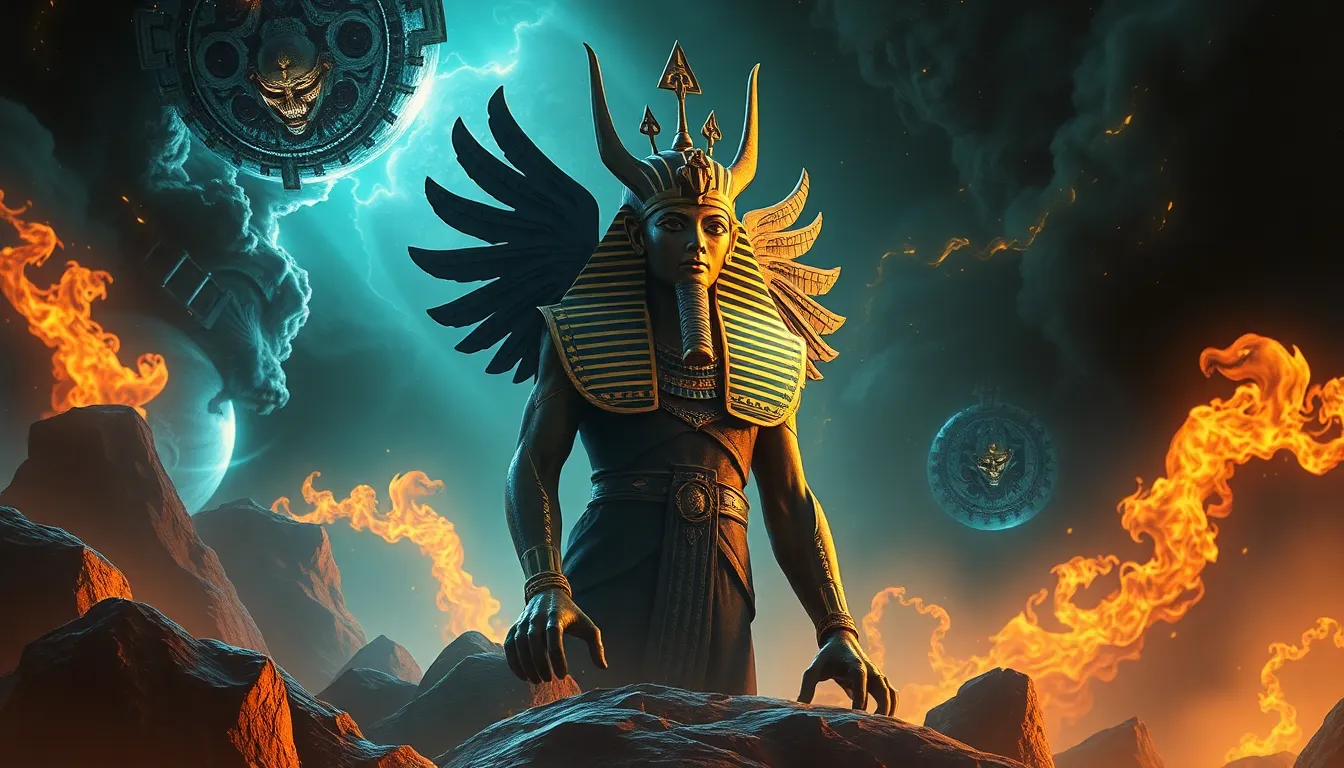The Legend of Osiris: Death, Betrayal, and Resurrection
I. Introduction to Osiris
Osiris is one of the most significant deities in ancient Egyptian mythology, revered as the god of the afterlife, the underworld, and resurrection. His narrative is central to Egyptian culture, encapsulating the essence of life, death, and rebirth. Osiris’s story embodies profound themes of death, betrayal, and resurrection, which resonate deeply in the hearts and minds of the ancient Egyptians, shaping their beliefs about mortality and the afterlife.
II. The Birth and Reign of Osiris
The origins of Osiris trace back to the earliest myths of ancient Egypt. He is often depicted as the son of the sky goddess Nut and the earth god Geb. Osiris was born as a deity of fertility and agriculture, symbolizing the cycles of nature and the seasonal flooding of the Nile, which brought fertility to the land.
As a ruler, Osiris was beloved by the Egyptian people. He taught them the art of agriculture, the importance of planting and harvesting, and the laws of civilization. His reign was characterized by prosperity and abundance, making him a figure of hope and stability in a world often fraught with chaos.
III. The Betrayal: Set’s Envy and Murder
Set, the god of chaos and storms, is introduced as Osiris’s brother and primary antagonist. Driven by envy and a desire for power, Set resented Osiris’s popularity and success. This jealousy culminated in a nefarious plot to murder Osiris, which Set orchestrated with cunning and deceit.
Set devised a plan to lure Osiris into a trap, inviting him to a grand feast. During the festivities, Set presented a beautifully crafted coffin, claiming it as a gift. Once Osiris entered the coffin, Set sealed it shut and cast it into the Nile, leading to Osiris’s untimely death.
IV. The Death of Osiris
Osiris’s death marked a pivotal moment in Egyptian mythology. The events surrounding his demise were shrouded in tragedy and betrayal. Upon discovering her husband’s fate, Isis, Osiris’s devoted wife, was devastated. The significance of Osiris’s death sent shockwaves through both the divine and mortal realms.
The gods reacted with a mixture of sorrow and anger. Isis mourned deeply, while other deities, such as Horus, the son of Osiris, vowed to avenge his father’s death. The people of Egypt also felt the impact of their beloved ruler’s demise, which disrupted the natural order and the prosperity that Osiris had brought to the land.
V. The Quest for Resurrection
Determined to bring her husband back to life, Isis embarked on a perilous journey to find Osiris’s body. Her quest was fraught with challenges, including confrontations with Set and navigating the treacherous waters of the Nile.
Isis’s perseverance led her to discover Osiris’s body, which had been hidden and mutilated by Set. Utilizing her powerful magic and the rituals of the ancient priests, Isis performed a series of sacred rites to restore Osiris’s body. Her dedication and love were instrumental in the eventual resurrection of Osiris.
VI. Resurrection and Transformation
The moment of Osiris’s resurrection was both dramatic and transformative. Through Isis’s magic, Osiris was brought back to life, but the resurrection came with a profound change. Osiris was no longer merely a god of fertility and agriculture; he transformed into the lord of the afterlife, ruling over the realm of the dead.
This transformation symbolizes the cycle of life and death, illustrating the belief that death is not an end, but a transition to another existence. Osiris became a beacon of hope for the dead, representing the promise of eternal life and rebirth, a core belief in Egyptian spirituality.
VII. The Legacy of Osiris
Osiris’s influence extended far beyond his myth. He became central to Egyptian religion, shaping concepts of the afterlife and the judgment of the dead. The story of his resurrection became a template for the beliefs surrounding the afterlife, where the deceased would face judgment before Osiris himself.
- Osiris’s role in funerary practices was crucial; the dead were often mummified and buried with offerings to gain his favor.
- His significance is evident in the “Weighing of the Heart” ceremony, where the souls of the deceased were judged against the feather of Ma’at.
- Osiris’s image permeated art and literature, symbolizing hope and the eternal cycle of life.
VIII. Conclusion
The legend of Osiris encapsulates key themes of death, betrayal, and resurrection, illustrating the complex interplay of life and the afterlife in ancient Egyptian culture. It serves as a reminder of the moral lessons derived from loyalty, love, and the quest for justice.
Even in contemporary culture, the relevance of Osiris’s story persists, resonating with modern ideas about mortality and the human experience. The tale of Osiris invites reflection on the nature of life and the enduring hope for rebirth, making it a timeless myth that continues to inspire.




